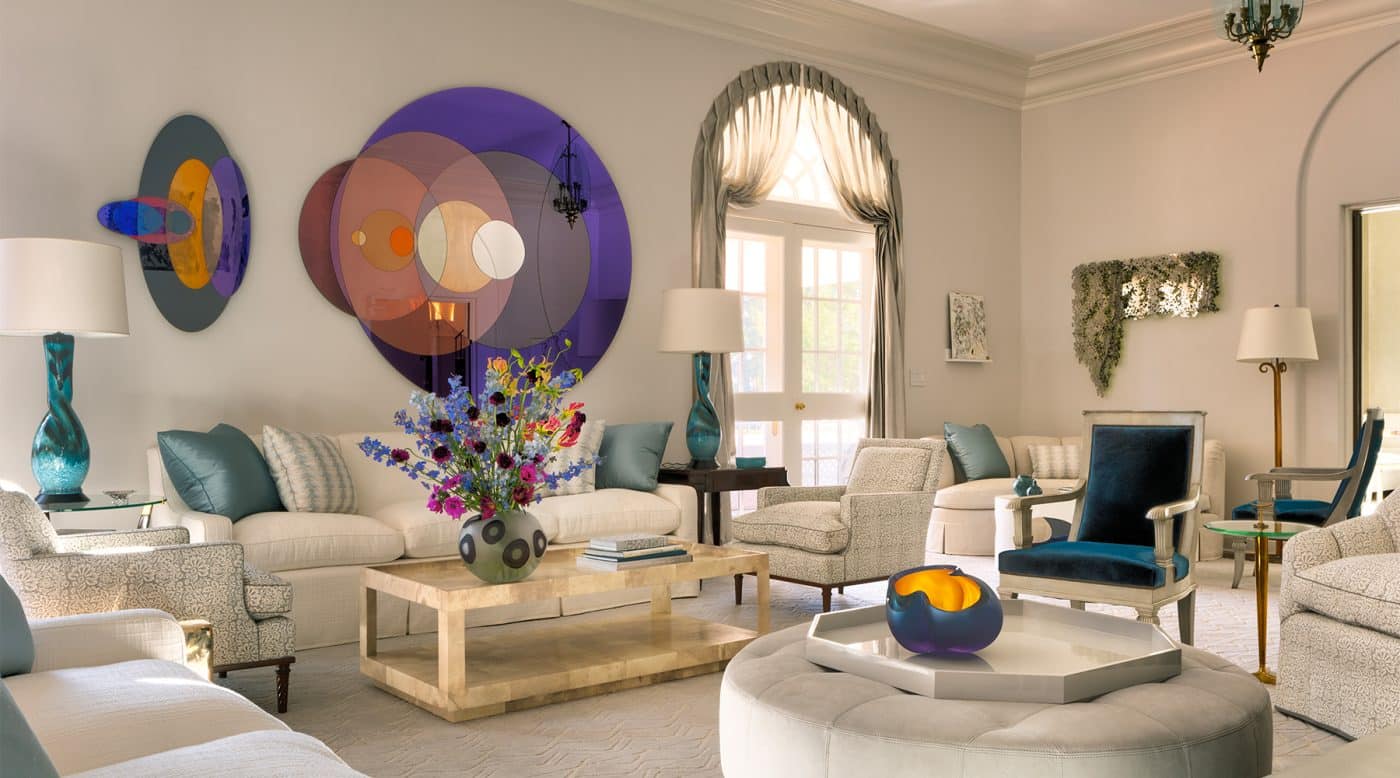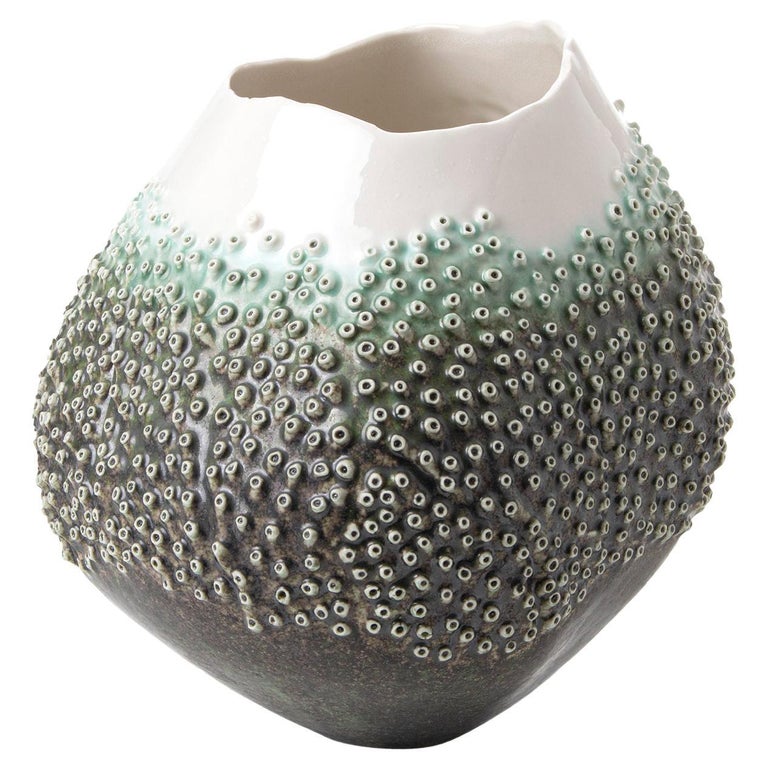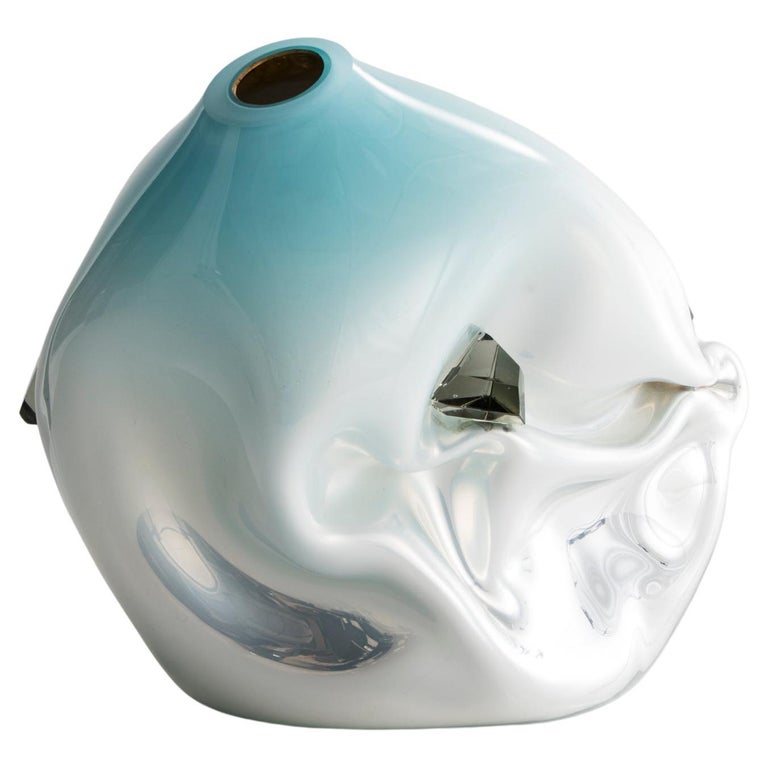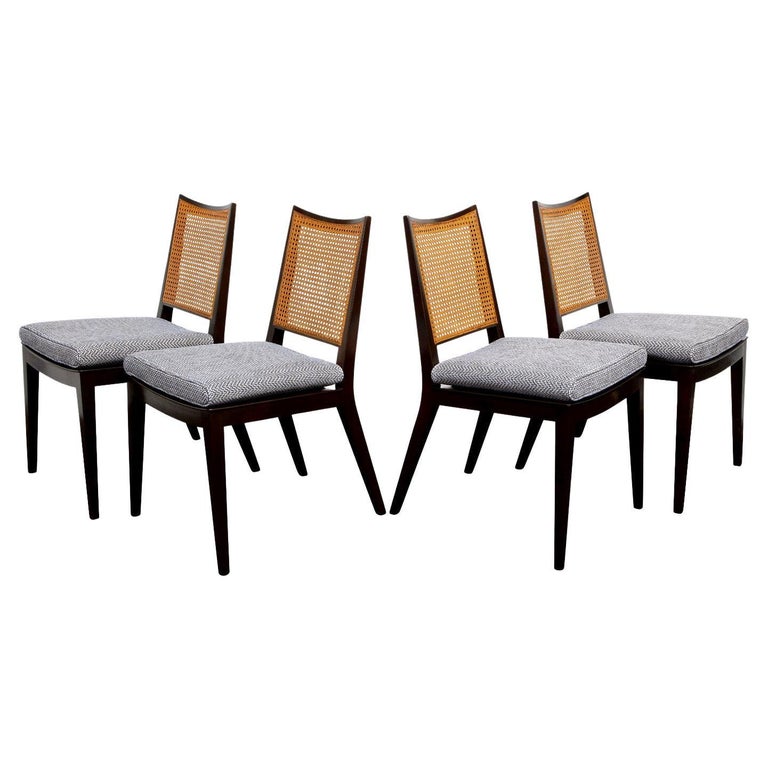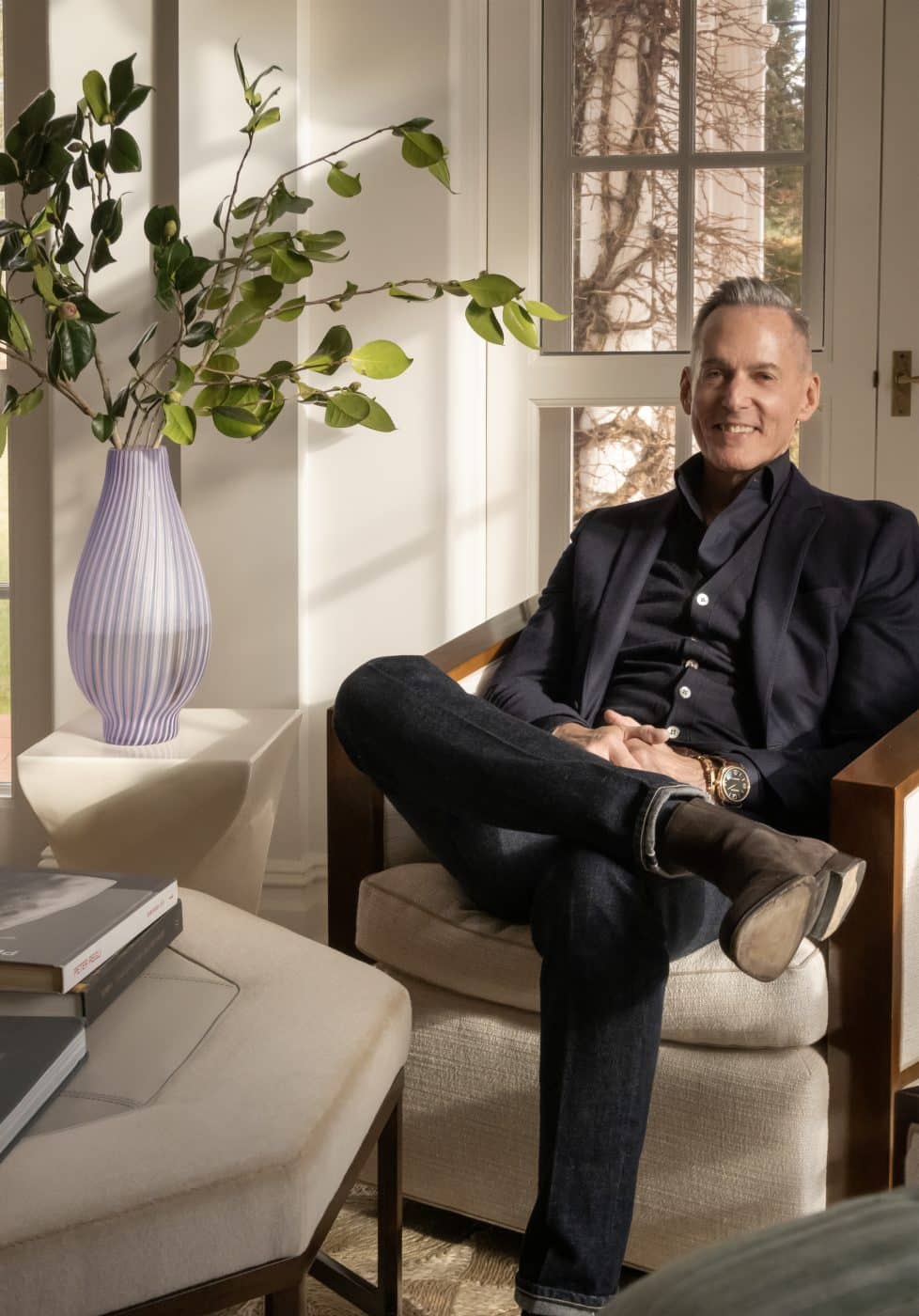
April 2, 2023Unless you’re the most passionate of preservationists, you’re not likely to want your old home in thrall to old-world formalities. Historically accurate interiors usually translate to a lack of comfort and dark, fusty period furnishings. The homeowners who purchased this Spanish Mediterranean revival estate, built in the early 20th century in Rye, New York, wanted neither.
“They had lived in the area and always admired the house,” explains the family’s interior designer, David Kleinberg. “It had been designed by Grosvenor Atterbury, so it had some architectural significance.”
Atterbury, an alumnus of the august architectural firm McKim, Mead & White, was the darling of wealthy industrialists, for whom he designed many weekend houses in Westchester and on Long Island. (Among them were the Stone Barns and various cottages at Kykuit, the Rockefeller estate in Pocantico Hills.)
The lifestyle of Kleinberg’s clients, however, didn’t match the original architectural style. “They had four children, all of them very active sports lovers, and the wife is energetic and vivacious but also warm, easygoing and relaxed,” he says. “So, they wanted the house to feel cheerful and welcoming.”
With this in mind, Kleinberg — a member of the 2023 1stDibs 50 whose eponymous Manhattan firm is known for an erudite, eclectic elegance — developed an approach that respected the neoclassical historical envelope while bringing in more natural light and aesthetic lightness.
“The house was structurally in quite good shape,” says Kleinberg. “These older houses were all well thought out and very logical in their progression through the rooms. So, we kept the configuration pretty much intact except for the kitchen, where we put in more windows to get a better view of the garden and opened it onto a sitting area. All baths also had to be redone.”
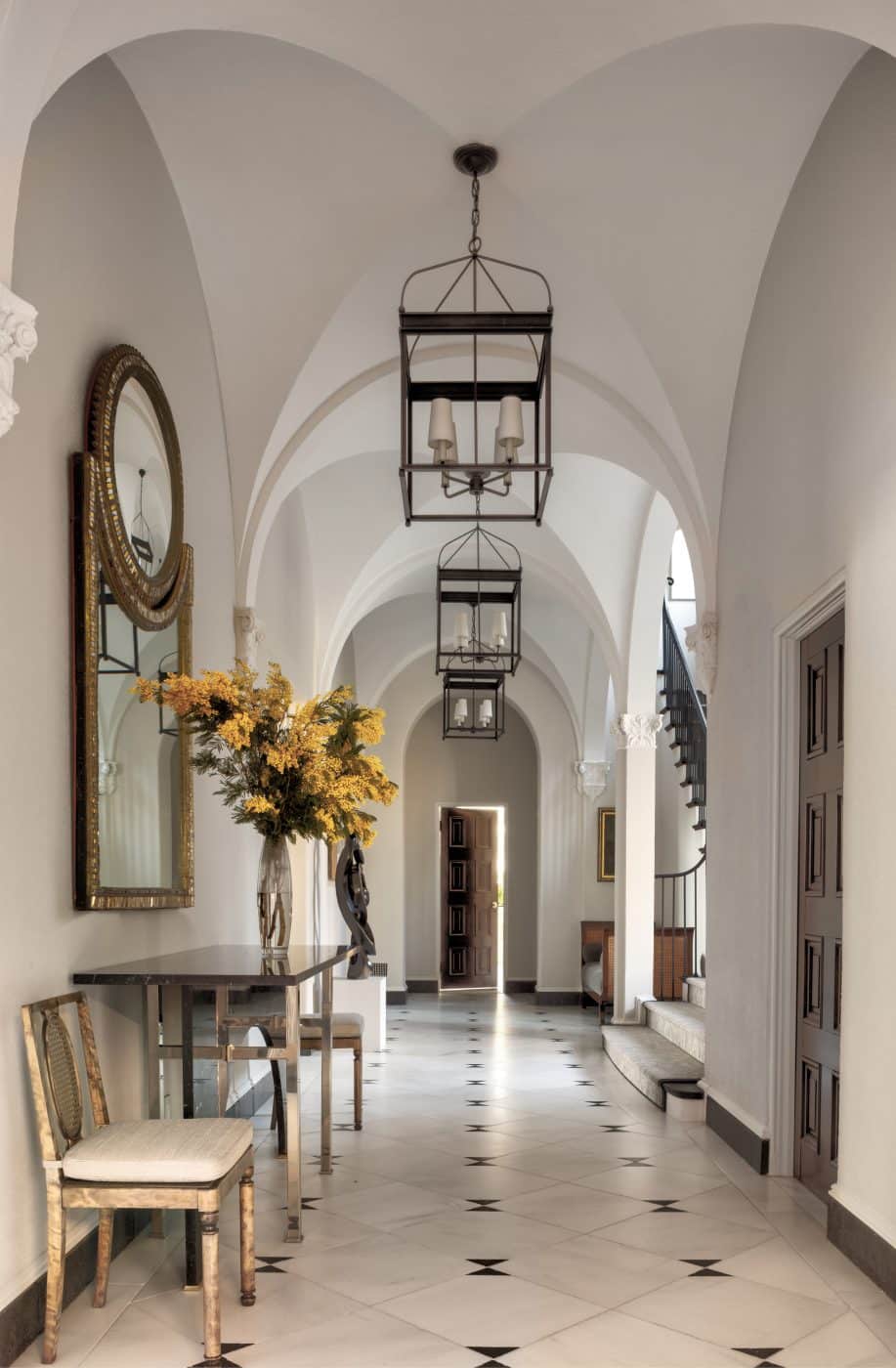
The foyer decor nods to traditional entry furnishings — often a gilt console with pier mirror — but filters them through a modern lens. “I like to have all the classic elements, but maybe not the exact classic examples,” Kleinberg says, summarizing a strategy he pursued throughout the residence.
Groin vaults supported on classical brackets in the entry and hall, extending to the back of the house, as well as a floor of irregular, rustic tumbled-stone tiles gave the impression of an austere cloister rather than an inviting home. Laying a new floor of white marble tile with black details toned down the solemn grandeur. The result is a sense of arrival that is elegant yet warm, and the large-format pattern of the tile feels more modern.
Kleinberg installed discreet up-lighting for the vaults and designed an Art Deco–inspired console that picks up on the black marble insets. Its arched base also “corresponded nicely to the groin vaults,” he says. Above the console, he hung a 1970s mirror, designed by the decorating duo Zajac & Callahan, whose trim of mosaic glass tiles is an elegant departure from the ornate carved-giltwood frame of the expected Venetian or pier mirror.
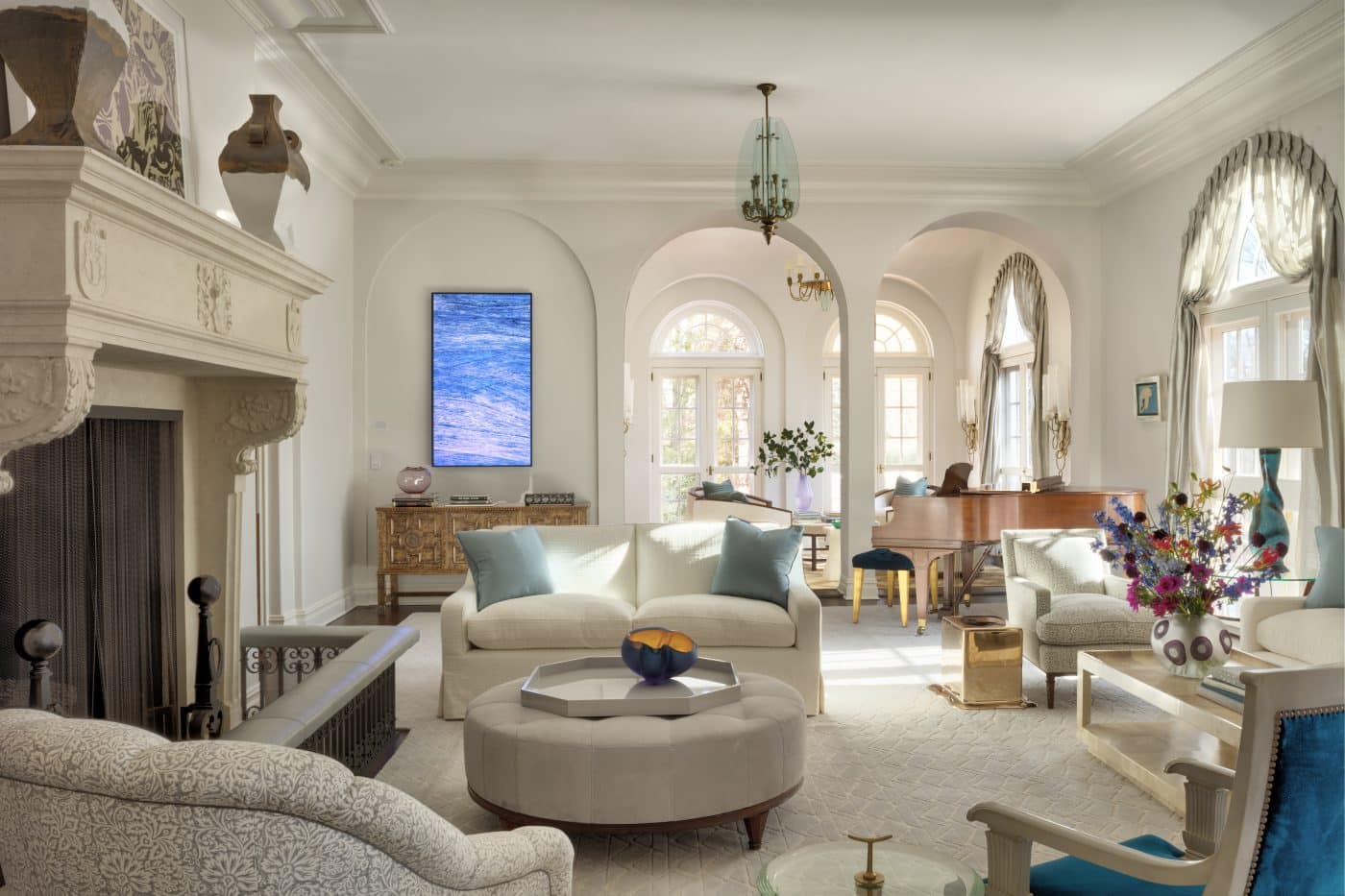
The living room boasts an imposing fireplace, original to the house. “We faux-finished the mantel,” says Kleinberg, “because it was quite a dark marble, which made the room feel foreboding.”
The limestone-like revamp lightened the space, and Kleinberg riffed off its hue with creamy upholstered pieces accented by occasional flashes of blue: a pair of French 1940s armchairs from Bernd Goeckler upholstered in blue velvet, mid-20th-century ceramic lamps and a luminous blue-glass vessel by Barbara Nanning from J. Lohmann Gallery.
The conversation between eras begun in the foyer continues here. The French armchairs feel neoclassical, and the upholstery on two other chairs alludes to traditional damask, but in a subdued, modern way.
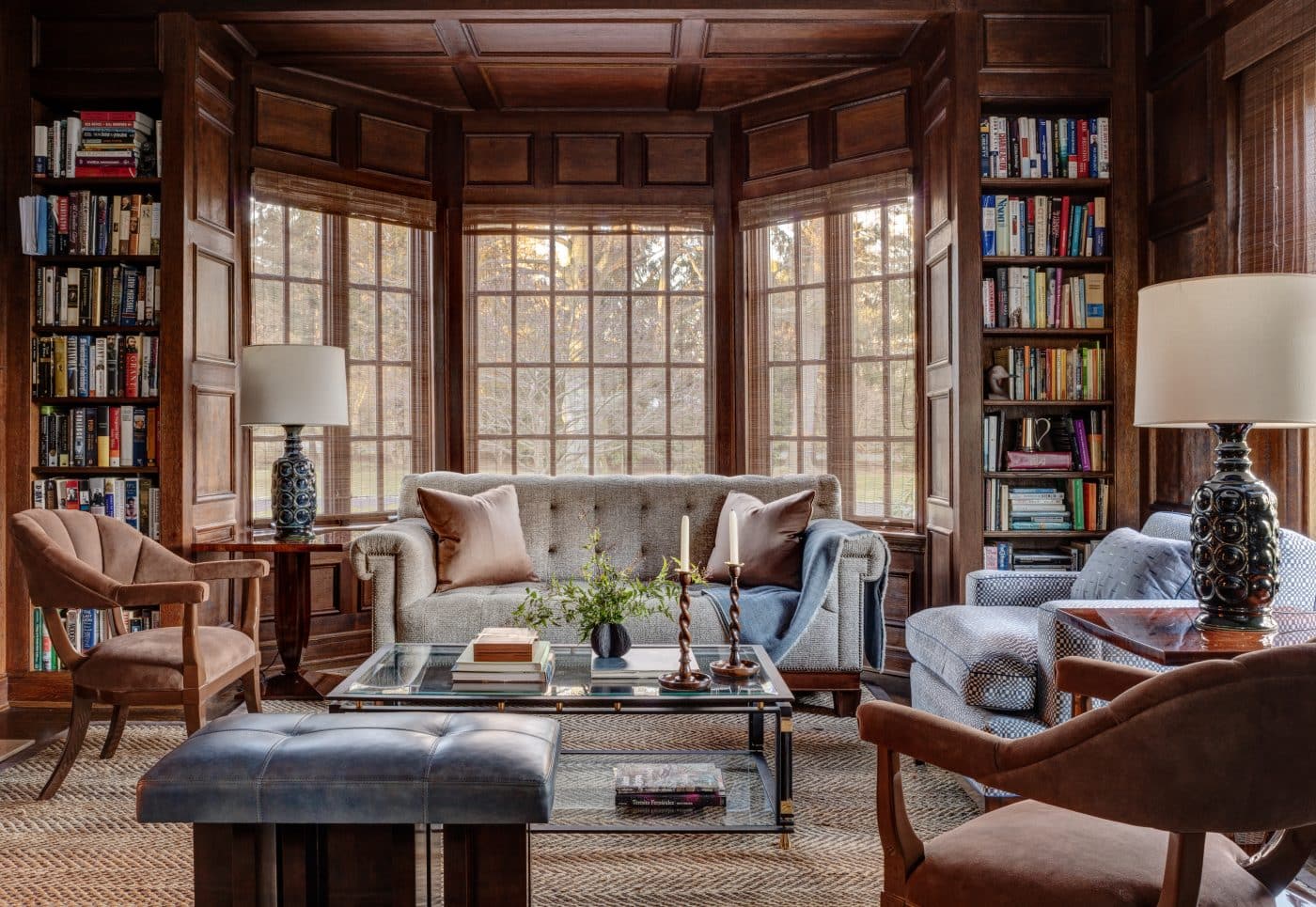
“You could put a traditional landscape behind the sofa, and it would be a very different room,” notes Kleinberg. Instead, the couple began amassing a contemporary art collection as the new house took shape. Hence the tinted mirror pieces by Olafur Eliasson hung above that couch and, by an adjacent seating group, a reflective Teresita Fernández work.
A lacquered-goatskin coffee table by Karl Springer, from Lobel Modern, adds to the modern inflection. At one end of the room is an antique Roma quilted-birch sideboard by Axel Einar Hjorth (one of a pair) topped by a box by Christopher Côme from Cristina Grajales Gallery.
Beyond that is what had likely been a winter garden, which a former owner enclosed. Here, Kleinberg arranged four custom Deco–inspired chairs in textured ivory-hued fabric around an octagonal ottoman table atop a sisal rug. Mid-century sconces from Galerie Glustin illuminate the space.
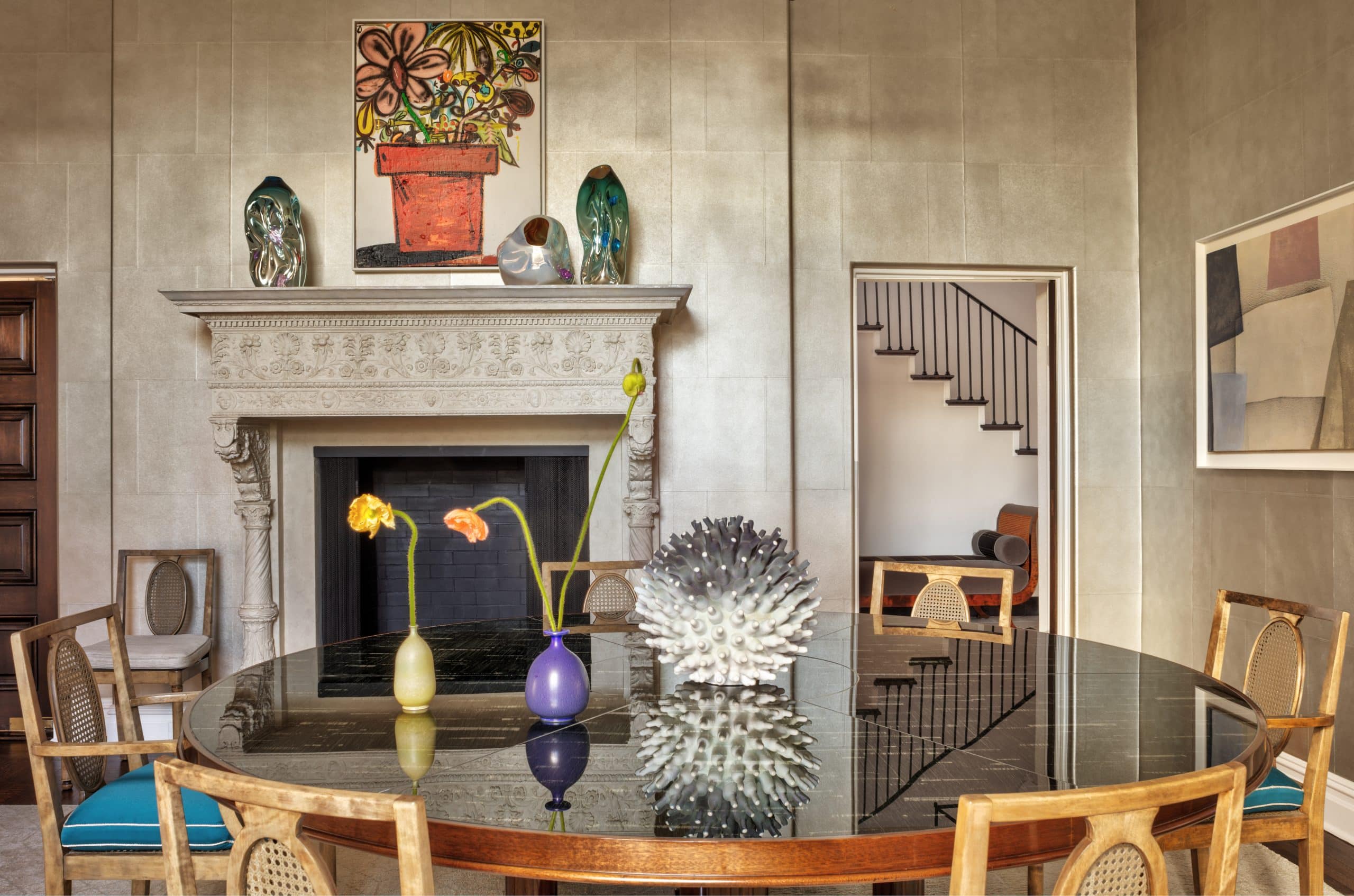
In another accomodation of more modern lifestyles, the dining room includes two twinned custom tables rather than one, each surrounded by caned-birch chairs by Hjorth.
“One table would have made the space look like a conference room,” says Kleinberg. “This is more family friendly. At a table for twelve, this family of six would be feeling like, ‘Where is everyone else?’ ”
Silver tea paper and a grand classical fireplace convey formality, which Kleinberg balanced with contemporary glass works by JEFF ZIMMERMAN from R. & COMPANY on the mantel and ceramic centerpieces by Eva Zethraeus from Hostler Burrows.
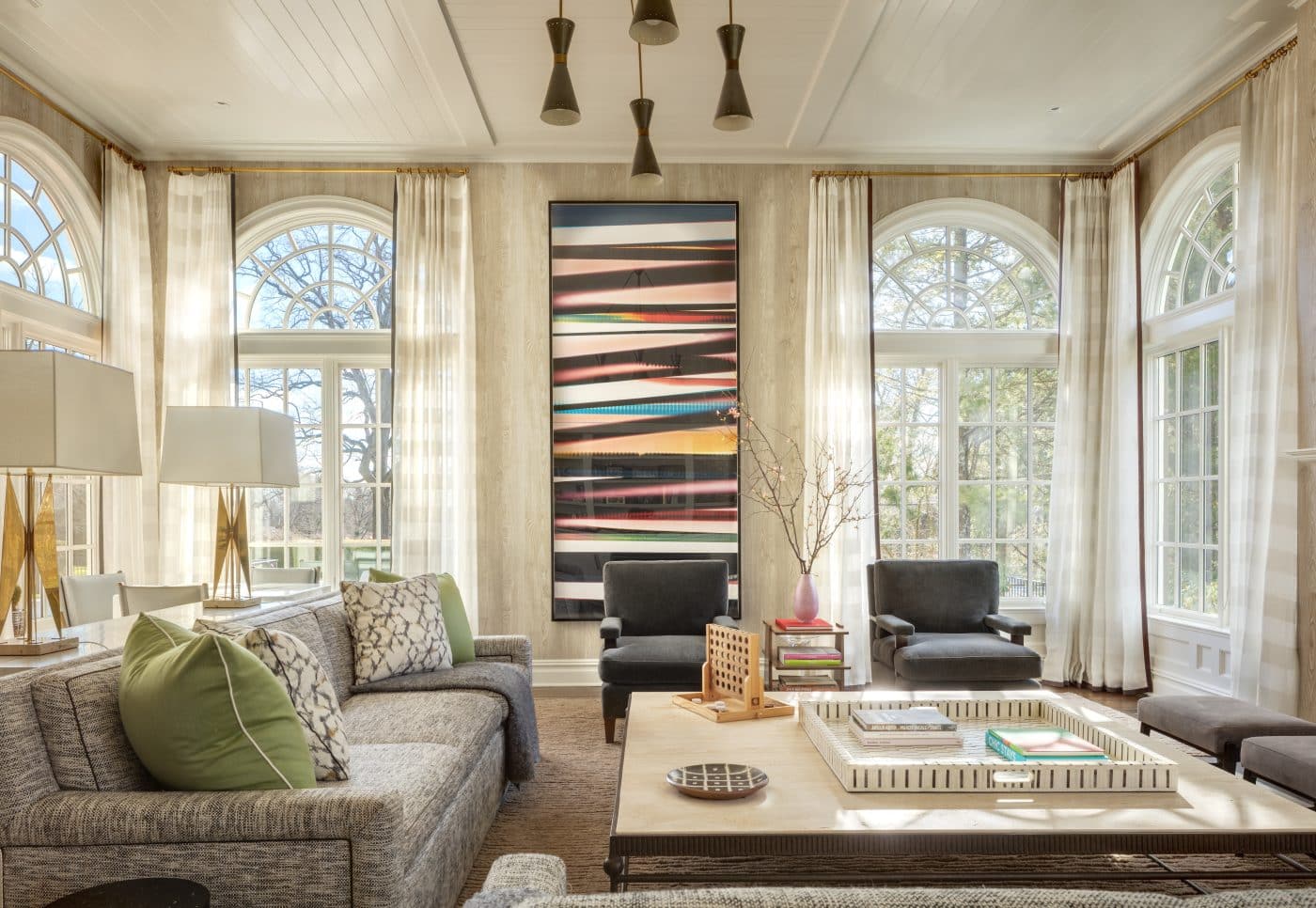
The family room is more relaxed and modern. Faux-bois driftwood-colored wallpaper and a board ceiling lend it an easy, comfy air, which Kleinberg punched up with contemporary pieces. Among the most striking: a massive white cement console by Fernando Mastrangelo with encrusted black silica underneath and a colorfully graphic photograph by Walead Beshty.
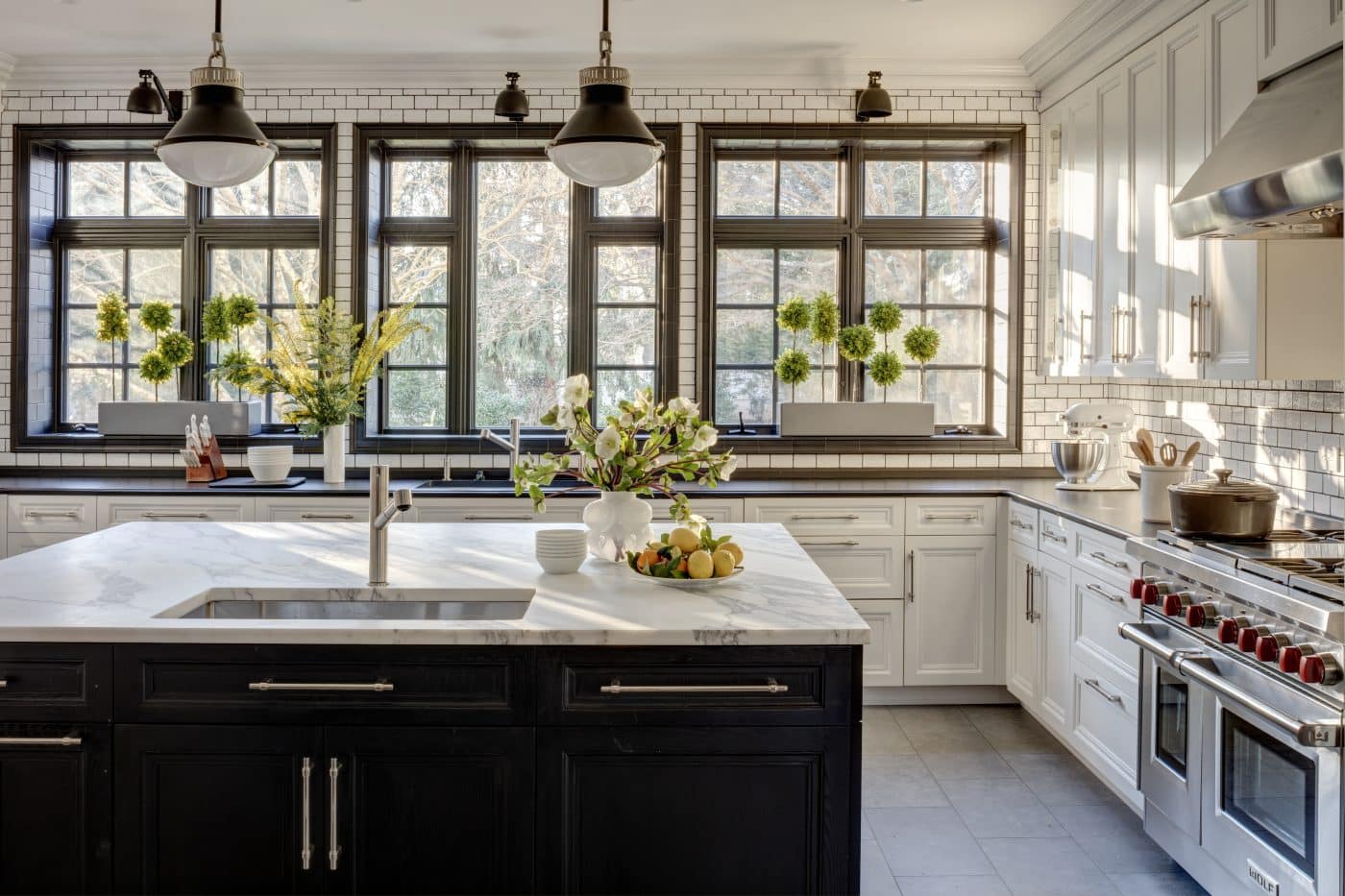
“For a house that was so balanced,” observes Kleinberg,” the primary suite was very asymmetrical. It was probably several rooms that had been cobbled together.”
To remedy this and achieve a sense of serenity, he wrapped the walls in the same stitched fabric used for the curtains. He accented the soothing white palette with Euro shams on the bed and seating upholstered in a soft celadon. As in the family room, contemporary art — two butterfly works by Damien Hirst — add personality and bring things squarely into the present day.
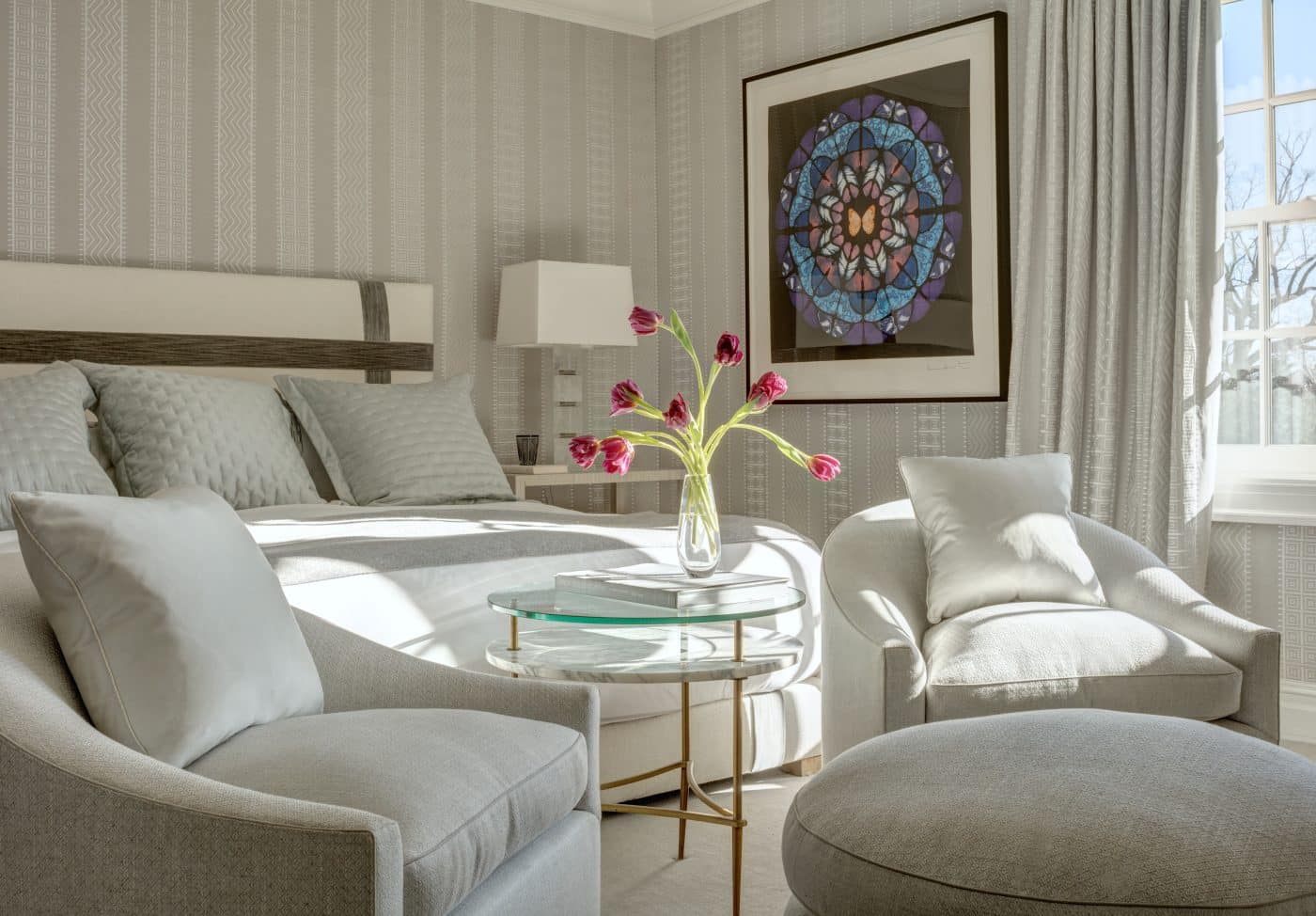
Throughout the house, most furnishings and appointments are new. The homeowners “rethought what they had and realized they had outgrown the usefulness of most of their furniture,” explains Kleinberg. “So, it was a pretty fresh start for them.” A fresh start for an Atterbury jewel, too, as it turned out.
